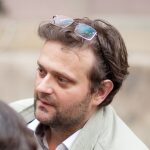Link to Pubmed [PMID] – 30196432
Link to DOI – 10.1007/s00429-018-1745-7
Brain Struct Funct. 2018 Dec;223(9):4259-4274
Social behavior and stress responses both rely on activity in the prefrontal cortex (PFC) and amygdala. We previously reported that acute stress exposure impoverishes social repertoire and triggers behavioral rigidity, and that both effects are modulated by β2-containing nicotinic receptors. We, therefore, hypothesized that the activity of brain regions associated with the integration of social cues will be modulated by stress exposure. We mapped the expression of c-fos protein in all subregions of the PFC and basolateral (BLA) and central (Ce) areas of the amygdala in C57BL/6J (B6) and β2-/- mice. We show altered brain activity and differences in functional connectivity between the two genotypes after stress: the PFC and BLA were hyperactivated in B6 and hypo-activated in β2-/- mice, showing that the impact of stress on brain activity and functional organization depends on the nicotinic system. We also show that the effects of the opportunity to explore a novel environment or interact socially after acute stress depended on genotype: exploration induced only marginal PFC activation in both genotypes relative to stress alone, excluding a major role for β2 receptors in this process. However, social interaction following stress only activated the rostral and caudolateral areas of the PFC in B6 mice, while it induced a kindling of activation in all PFC and amygdalar areas in β2-/- mice. These results indicate that acute stress triggers important PFC-amygdala plasticity, social interaction has a buffering role during stress-induced brain activation, and β2 receptors contribute to the effects of social interaction under stress.


